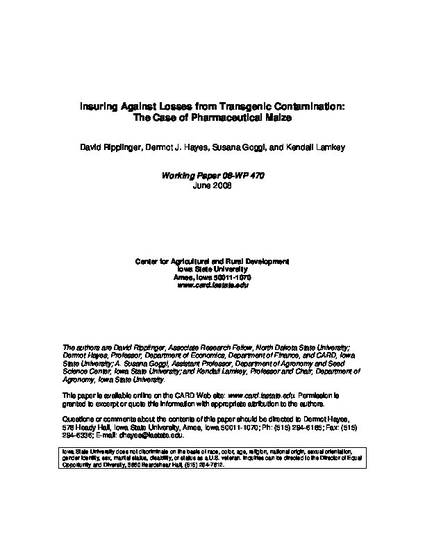
Article
Insuring Against Losses from Transgenic Contamination: The Case of Pharmaceutical Maize
American Journal of Agricultural Economics
Document Type
Article
Disciplines
Publication Version
Submitted Manuscript
Publication Date
7-1-2008
DOI
10.1111/j.1467-8276.2008.01243.x
Abstract
Concerns about the risk of food supply contamination have limited the development and commercialization of certain pharmaceutical plants. This article develops an insurance pricing model that helps translate these concerns into a cost-benefit analysis. The model first estimates the physical dispersal of maize pollen subject to a number of weather parameters. This distribution is then validated with the limited amount of currently available field trial data. The physical distribution is then used to calculate the premium for a fair-valued insurance policy that would fund the destruction of possibly contaminated fields. The flexible framework can be readily adapted to other crops, management practices, and regions.
Citation Information
David G. Ripplinger, Dermot J. Hayes, A. Susana Goggi and Kendall Lamkey. "Insuring Against Losses from Transgenic Contamination: The Case of Pharmaceutical Maize" American Journal of Agricultural Economics Vol. 91 Iss. 2 (2008) p. 322 - 334 Available at: http://works.bepress.com/dermot_hayes/140/

This is a working paper of an article from American Journal of Agricultural Economics, 2008, 91(2); 322-334. DOI: 10.1111/j.1467-8276.2008.01243.x.